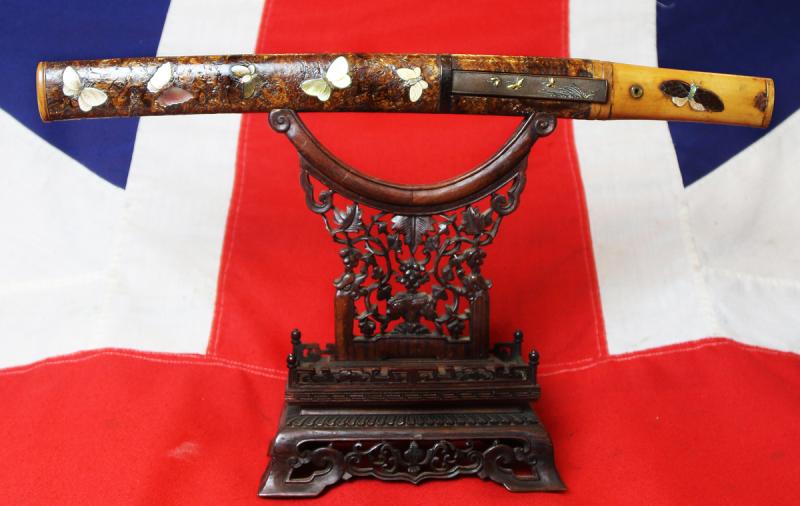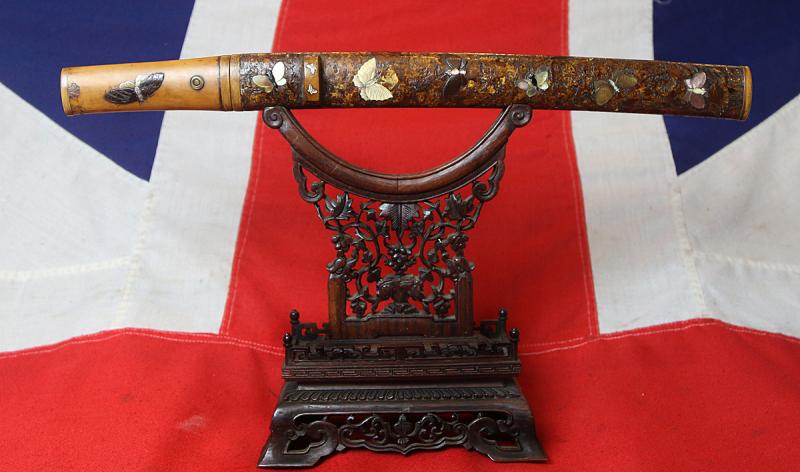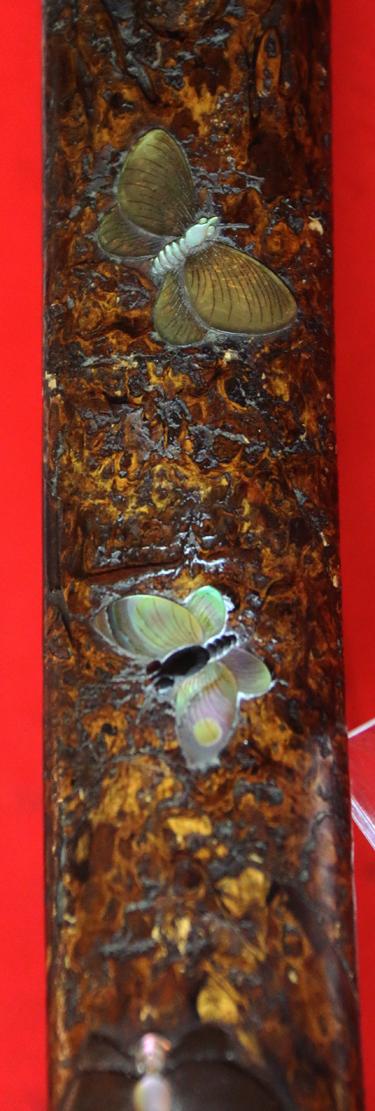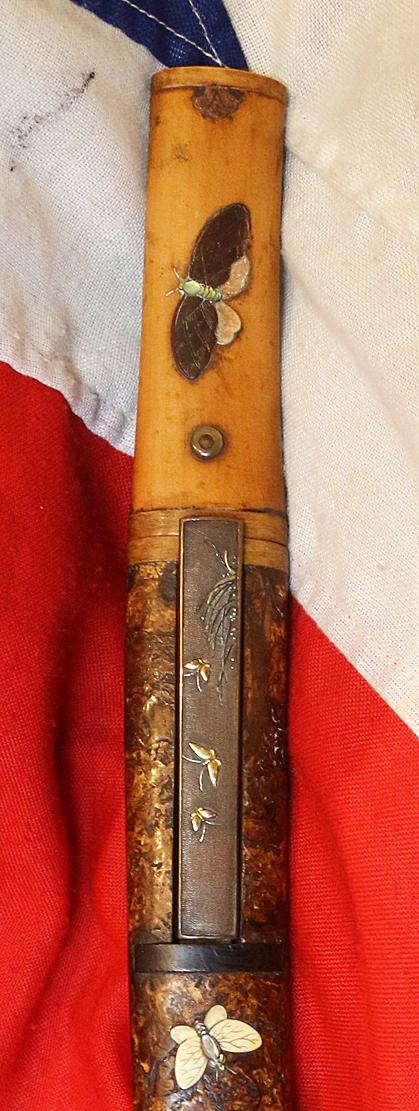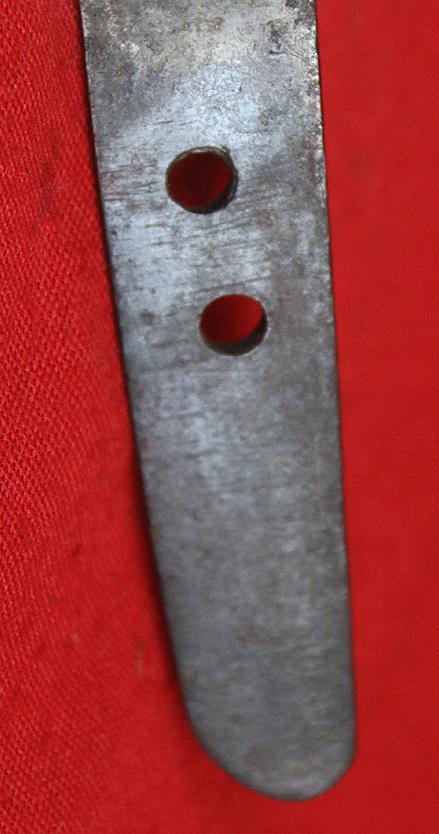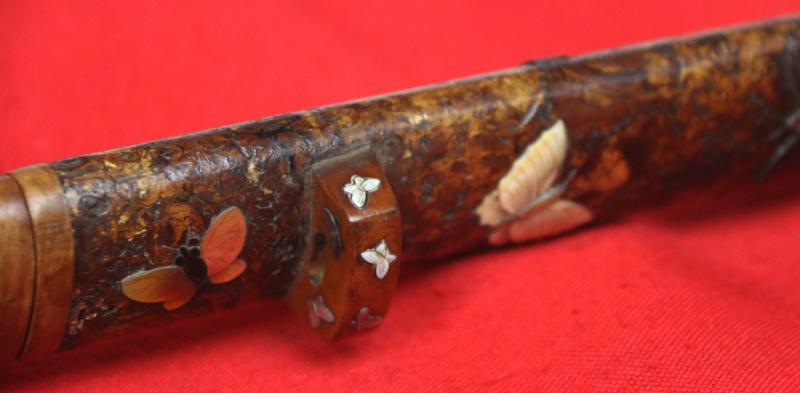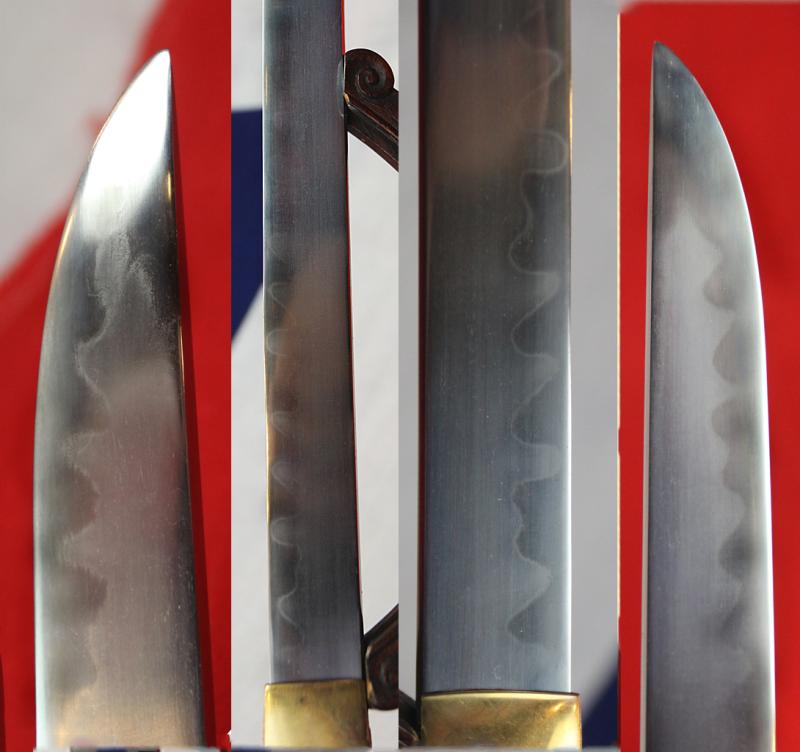A Stunning Museum Piece & An Exquiste Original Edo Period Shibayama Japanese Carved Abilone Mother o'Pearl Butterfly Tanto. Mounted With an Ancient, 500 Year old Mino Blade, Circa 1500
Just returned from traditional polishing and it looks absolutely incredible, showing a deep and amazing midareba hamon. Especially considering the blade is around 500 years old.
The true epitome of a breathtaking Japanese samurai 'art sword'. Not only a stunning piece of unique Japanese object d'art, it was a usable and functional piece of samurai weaponry. The Japanese have always regarded the Japanese sword as a medium of functional beauty. It is said to be the iron of art. It stands not only as an outstanding weapon, but is also beautiful. And, this beauty has always been pursued by the Japanese.
It has an extraordinary full koshirae sword mounting of decorated shibayama, of the finest quality and beauty, of carving in the deep relief takebori form, of absolutely beautiful, three dimensional hand carved relief butterflies in carved abilone mother o’pearl and bone throughout, and the saya is stunningly decorated with a multilayered, differing shades of a gold and brown translucent lacquered finish, with simulated crackling designed to represent tree bark, that the butterflies are inlaid within, that is fantastically simulated to appear like real slightly coarse tree bark, the natural background that butterflies inhabit in nature.
This extraordinarily complex form of lacquer work would likely taken a year to accomplish by the artisan alone, then the butterflies, once carved, would have been inlaid within the lacquer-work. The overall effect of a natural gathering of over a dozen species of lepidoptera is absolutely amazing. Simply breathtaking work of the highest order, created by an artisan of unparalleled skill.
‘Shibayama is The Pinnacle of Japanese Decorative Art.’
Shibayama refers to the intricate carving and minute encrustation of various materials on to a background material. The inlay typically consists of mother-of-pearl, bone, tortoiseshell or coral, the combination creating a delightful contrast of colours and textures. Set in high relief above a wood, lacquer and sometimes an organic base, the inlay depicts figures, flora and fauna with a highly appealing three-dimensional effect. Probably some of the most complex artwork an artist could ever attempt.
Shibayama as an art form was founded by the late Edo period craftsman Ōnoki Senzō, who named this technique after his hometown Shibayama in present-day Chiba prefecture. Senzō soon became so celebrated for his invention that he then decided to adopt Shibayama as his surname. Following its introduction at the 1867 Paris World Expo, shibayama treasures were to enjoy great fascination and appreciation from Western collectors, and facilitated by the opening up of Meiji Japan, many Shibayama pieces were exported to Europe.
The tanto has a beautiful kozuka utility knife of pure gold butterflies on a shakudo nanako ground
Fine pieces of even the smallest examples of shibayama can approach many tens of thousands of pounds in the world art market.
A similar quality set of Shibayama tanto koshirae just simply the fittings alone, also inlaid with butterfly and insects, just as this one, possibly by the same artisan, but without any blade at all still present, but with its small kozuka utility knif. It sold at Zacke's Auction in Vienna in 2020, lot 256, for almost £8,000
Code: 24032

